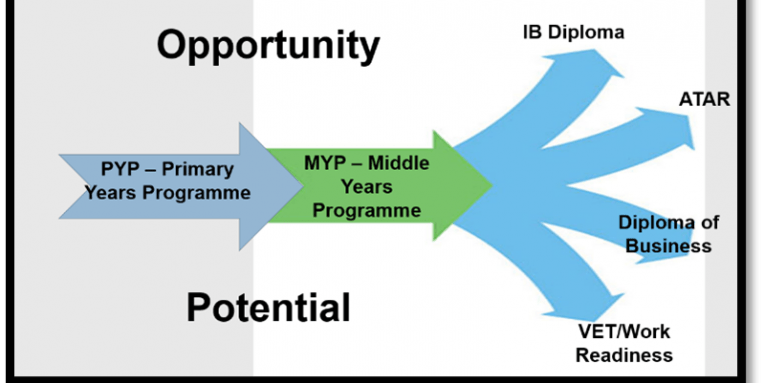Stress analysis is the lifeblood of materials science and mechanical engineering, and understanding the subtleties of true stress and engineering stress can make all the difference in the world of structural integrity. Whether you’re a seasoned engineer, a budding materials scientist, or simply someone fascinated by the intricacies of the physical world, this comprehensive guide will unravel the essence about true stress vs engineering stress and shed light on their practical implications.
What is the Difference Between True Stress and Engineering Stress?

Engineering stress is a simplified form of stress calculation that assumes the area of the material remains constant during deformation. It’s an approximation for convenience and simplicity, commonly used in structural analysis and elementary material testing. It’s calculated by dividing the applied force by the original cross-sectional area of the material.
On the other hand, true stress takes into account the changes in the material’s cross-sectional area during deformation, making it a more accurate representation of the material’s behavior under load. It’s determined by dividing the applied force by the actual (changing) cross-sectional area.
In a nutshell, while engineering stress offers a simplified and practical approach, true stress provides a more realistic and accurate picture of stress distribution in a material.
How Does it Differ for True Stress and Engineering Stress?

Visualizing the behavior of materials under stress is done using the stress-strain curve, a vital tool in material science and mechanical engineering. The engineering stress-strain curve is commonly used due to its simplicity, but it does not account for the actual deformation behavior past the yield point of a material.
The true stress-strain curve, conversely, takes into account the actual deformation behavior, offering a more accurate depiction of material properties up to and beyond the point of yielding. It reveals that a material’s strength (resistance to deformation) can actually increase after it starts yielding, a phenomenon often observed in processes like metal forming.
True Stress vs Engineering Stress
As highlighted, true stress paints a more accurate picture of a material’s behavior under stress. It factors in the change in a material’s cross-sectional area during deformation, capturing its real-time response to applied forces. However, this doesn’t mean that engineering stress is invalid. In fact, engineering stress is often good enough for practical calculations in many cases, especially when deformations are within the elastic limit.
Remember, accuracy isn’t always the key factor. Sometimes, practicality, simplicity, and efficiency are just as critical, depending on your specific application or problem at hand.
Advantages of Using True Stress
In metal forming processes, like forging or extrusion, materials often undergo significant plastic deformation. True stress gives a more realistic description of such processes because it accounts for changes in cross-sectional area.
Utilizing true stress in metal forming processes can help optimize these processes, providing vital insights to improve the quality of the end product, reduce waste, and increase efficiency.
How Do True Stress and Engineering Stress Differ in Predicting Material Failure?
Predicting material failure is a crucial part of stress analysis. Here again, true stress provides a more accurate representation. Engineering stress tends to underestimate the amount of stress a material can withstand before failure because it does not account for strain-hardening effects, which are well captured by true stress.
However, under certain conditions and for certain materials, the difference in predicting failure between the two might not be significantly large. So the choice of using true stress or engineering stress for failure prediction often depends on the specific requirements of the problem at hand.
Impact of Material Properties on True Stress and Engineering Stress
The choice between true stress and engineering stress also depends on the properties of the material under study. The mechanical behavior of a material, whether it’s ductile or brittle, greatly influences the representation of stress.
Ductile materials, such as metals, have the capacity to deform extensively before fracture. In these cases, true stress proves to be a more faithful descriptor as it accounts for this deformation. However, for brittle materials like glass or ceramics, which fracture without significant plastic deformation, engineering stress is often adequate for most applications.
Yield Strength
Yield strength, the stress at which a material begins to deform plastically, is another key element in our stress comparison. Engineering stress typically underestimates the yield strength because it doesn’t factor in the reduced area under load. This simplification is generally acceptable for initial design and calculations.
On the contrary, true stress, by considering the actual area at a given instant, gives a more precise yield strength value. This precise measure becomes vital in processes that involve substantial plastic deformation or when a precise safety margin is crucial.
True Stress and Engineering Stress
Understanding these two types of stress isn’t just theoretical; it has real-world implications in numerous applications. For instance, in the automotive industry, understanding the difference between true stress and engineering stress is vital. Engineers need to accurately predict how materials will behave under different loading conditions, from the weight of passengers and cargo to the impact of a collision.
In construction, engineers use these principles to predict how building materials will react to various forces, from the weight of the structure itself to external pressures such as wind or seismic activity. Accurate stress analysis leads to safer, more durable structures.
True Stress and Engineering Stress Behavior
Temperature also plays a significant role in material behavior under stress. As the temperature changes, so too do the properties of materials. Metals, for example, may become more ductile at higher temperatures, leading to a more significant discrepancy between true and engineering stress.
In these situations, it becomes crucial to consider true stress, as it will provide a more accurate representation of the material’s behavior under these altered conditions. This becomes particularly important in industries such as aerospace or power generation, where materials may be subjected to extreme temperatures.
Plastic Deformation and Its Relationship with True Stress
When a material is subjected to stress beyond its elastic limit, it deforms plastically. This means the material won’t return to its original shape when the load is removed.
Understanding plastic deformation is crucial in industries like metal forming or civil engineering. The concept of true stress becomes pivotal here as it captures the actual stress experienced by the material during this deformation process, thereby providing insights for more accurate predictions and effective process controls.
True Stress vs. Engineering Stress
The choice of true stress or engineering stress largely depends on your specific application. For design purposes, especially for small deformations within the elastic region, engineering stress is typically sufficient.
However, in applications involving significant plastic deformation, such as metal forming, or in failure analysis, true stress would be the more accurate option. Also, if you’re dealing with temperature changes or high-stress conditions, considering true stress can offer a more realistic view of material behavior.
In essence, while engineering stress offers simplicity and ease, true stress brings accuracy and depth. The key is to understand your requirements and make an informed decision based on the nature of the material, the extent of deformation, the operational environment, and the desired level of accuracy.
Stress Analysis
To sum up, the world of stress analysis is a dynamic and complex one, filled with multiple variables and conditions. The notions of true stress and engineering stress are two fundamental pillars of this world, each with its advantages and applicable scenarios.
Your journey into understanding these concepts, whether for academic, professional, or personal interests, should be guided by a spirit of curiosity, a hunger for precision, and an understanding of practicality. At the intersection of these attributes, you’ll find the perfect balance and make the best use of these twin pillars of stress analysis.
Remember, as the masters of materials and guardians of structural integrity, our choices aren’t just about calculations. They are about building a safer, more efficient, and more innovative world, one stress analysis at a time.
Also Read: Where are Bosch Appliances Made? (Updated Information)
The Verdict
Ultimately, the choice between true stress and engineering stress is not about ‘good’ or ‘bad’ or ‘better’ or ‘worse.’ It’s about ‘fit for purpose.’ If you’re looking for a quick, simple understanding of stress in a material – particularly if the deformations are small – engineering stress might be your go-to. But if you’re dealing with large deformations, strain hardening, or need a more accurate stress analysis, then true stress is your ally.
It’s crucial to understand these concepts and their appropriate application to make informed decisions in the design, testing, and analysis of materials and structures. As engineers and scientists, this deep understanding enables us to push the boundaries of what is possible and create safer, more efficient, and more innovative solutions to the challenges of the modern world.
Whatever your application, the exploration of true stress and engineering stress is a journey into the very heart of materials science and mechanical engineering. It’s a story of how we understand, manipulate, and ultimately harness the very stuff that our world is made of.
In the world of stress analysis, each concept plays its part, contributing to our understanding of material behavior. Both true stress and engineering stress are tools in our engineering toolbox. Knowing when and how to use each tool is what sets apart the great engineers and scientists from the good ones










